#Source of Minerals for chia seeds
Explore tagged Tumblr posts
Text
Top 5 Advantages of Chia Seeds for Hormonal Balance
Chia Seeds for Hormonal Balance: Hormones are important as they coordinate various body functions. They are responsible for the signals to manage different body parts. Moreover, they travel through your blood to muscles, tissues, skin and so on. Learn here the advantages of chia seeds to support the balancing of hormones. What Are the Benefits of Chia Seeds for Hormonal Balance? Gut Health Gut…

View On WordPress
#Can chia seeds help regulate periods?#Chia Seed#Chia Seeds#Chia seeds Controlling Blood Sugar#Chia Seeds for Hormonal Balance#chia seeds Protection via Antioxidants#Do chia seeds have estrogen?#How to correct hormonal imbalances?#Incorporating Chia Seeds in Diet for Hormonal Balance#PCOS chia seeds#Source of Minerals for chia seeds#What Are the Benefits of Chia Seeds for Hormonal Balance?#What foods can balance female hormones?#Which seed is best for hormonal imbalance?
0 notes
Text
taking control of ur wellness (tips and tricks to be ur healthiest most vibrant you)⋆.ೃ࿔*:・✍🏽🌸


you must treat ur body like the temple that it is. love every inch of urself and out of love for urself, take good care of it. in this post we'll explore how to take control of ur wellness and overall take better care of urself from the inside out…💬🎀



THE MAINTENANCE ;
maintaining ur health by taking supplements is something that i do and its made a big difference in my health. because im taking my vitamins and supplements i feel a lot better and i dont get sick often at all.
♡ invest in a cute vitamin box to inspire u to take ur vitamins
i take a daily multivitamin in the morning and at night i take magnesium + D3 because its helped me fix my sleep schedule and just have better quality of sleep. plus its a better alternative to melatonin ᡣ𐭩 •。ꪆৎ ˚⋅✍🏽
DISCLAIMER : its crucial for u to do ur own research when it comes to ur health so make sure that u do that before applying anything that u learn on the internet for ur own safety!…💬🎀
♡ chia seed water every morning


make sure that ur not consuming more than 1-2 tbsp of chia seeds a day but i put 2 tablespoons of chia seeds in my water every morning cuz its an amazing source of fiber, and they're rich in omega-3 fatty acids and other vitamins and minerals.
♡ if im experiencing inflammation i'll take some warm water, turmeric and some lemon
♡ chlorophyll water (bonus points if u add a lemon wedge)
chlorophyll is an internal deodorizer! it helps to detoxify the body by binding to and eliminating toxins, heavy metals, and harmful substances. it also helps with skin concerns like acne 💕
♡ dry brushing
dry brushing is something else that i do that has an impact on my health. dry brushing unclogs pores in the exfoliation process. it also helps detoxify your skin by increasing blood circulation and promoting lymph flow/drainage. so not only am i exfoliating for softer more princessy skin, im also promoting my lymph flow and increasing my blood circulation.
THE IMPORTANCE OF HYDRATION ;
i know everyone always talks about how important it is to drink water and its lowkey overdone but its TRUE. water is so SO important. if u have difficulty drinking enough water invest in a cute water bottle with a straw. i say with a straw cuz i feel like personally, im more inclined to drink water if its out of a straw.


YOU ARE WHAT YOU EAT ;
when ur eating, try focusing on how the food ur eating is making you feel. everyones body responds differently to different foods so by noticing how u feel after eating something, you can have a better idea of what u should continue eating and what u should steer clear of. with that being said, lets get into this section. 🗒️
something else that i wanted to yap about in this section is that there is a difference between restricting urself and self control. eating shouldn't be bringing u anxiety and ur allowed to let urself live. so eat to feel satiated and happy, dont eat to the point where you feel sick and like u can barely move.
something that has helped me be more conscious of what im choosing to fuel my body with is the 80-20 rule. choose the healthier option 80% of the time and the 20% of the time eat yummy pastries and cakes 💕
if ur someone who has difficulty eating vegetables, try cooking them in a different way and seasoning them adequately to make them yummy, masking them in different dishes. OR if that doesnt work for u get ur veggies in smoothies. cuz u gotta get in some fruits and vegetables.
im someone who loves to have a fun drink in the mornings and during the day so i've been super obsessed with making my own smoothies. my smoothie formula is super simple and it has never failed me.


(1-2 fruits + collagen powder/protein powder + almond milk + a bit of honey/maple syrup + ice)…💬🎀
some more wellness drinks and juicing recipes →
♡ apple + lemon + kale + honey + water
♡ grapefruit + lemon + kale + water
ALL ABOUT PROBIOTICS ;
probiotics are the good bacteria that live in your gut, working hard to keep your digestive system balanced and healthy. SO if you’re dealing with bloating, fatigue, or even skin issues, it might be time to show your gut some love.
♡ kimchi
♡ greek yogurt
♡ kefir
♡ pickles
♡ kombucha
MOVING YOUR BODY ;
moving ur body is also super duper important, not only for ur physical well being but also for ur mental wellbeing so make sure that ur getting physical activity every single day.



whether thats going to the gym, stretching, playing a sport, going on walks, dancing etc. there are literally SO many ways that u can move ur body and enjoy urself ᡣ𐭩 •。ꪆৎ ˚⋅ some things that i like to do to stay active are →
♡ dancing ♡ stretching ♡ jump-roping (my favorite) ♡ walking
the trick to this is using the stair master machine OR if u dont have one in ur gym, u can just go on the treadmill at an incline for like 30 minutes or however long u can, and putting ur hands up to ur head and keeping ur posture straight. aim for at least a 5-10% incline, but you can go higher depending on your fitness level…💬🎀
or ofc u can go on walks with ur pet or ✨hot girl walks✨ and walk while listening to a podcast, literally whatever u prefer.
♡ pilates/workouts that i can follow along with on youtube


a fun way to keep track of the workouts that u consistently do is to make a workout book like i did. that way i can have everything at my fingertips right when i need it 💕🗒️
#honeytonedhottie⭐️#advice#it girl#becoming that girl#wellness#wellness journey#pink pilates princess#that girl#dream girl tips#dream life#dream girl#health#health maintenance#self care#self improvement#hyper femininity#hyper feminine#girly#girl blog#girl blogging#fabulous#fabulously feminine#glamorous#princess#self care regimen#workout regimen#regimens#routines#wellness routine
848 notes
·
View notes
Text
Superfoods you should incorporate in your diet:
Superfoods are nutrient-dense foods that are considered beneficial for your health due to their high concentration of vitamins, minerals, antioxidants, and other beneficial compounds.
Combine these superfoods with a variety of other whole foods to ensure you're getting a wide range of nutrients. Also, be mindful of portion sizes and any individual dietary restrictions or allergies you may have.
Berries: Blueberries, strawberries, raspberries, and other berries are rich in antioxidants, fiber, and vitamins.
Leafy greens: Spinach, kale, Swiss chard, and other leafy greens are packed with vitamins, minerals, and fiber. They are low in calories and provide important nutrients like vitamin K, vitamin C, and folate.
Cruciferous vegetables: Broccoli, cauliflower, Brussels sprouts, and cabbage are part of the cruciferous vegetable family. They contain compounds that may help reduce the risk of certain cancers.
Nuts and seeds: Almonds, walnuts, chia seeds, flaxseeds, and hemp seeds are excellent sources of healthy fats, protein, fiber, and various vitamins and minerals.
Fish: Fatty fish like salmon, sardines, and mackerel are rich in omega-3 fatty acids, which are beneficial for heart health and brain function.
Whole grains: Quinoa, brown rice, oats, and whole wheat are examples of whole grains that provide fiber, vitamins, and minerals.
Legumes: Beans, lentils, chickpeas, and other legumes are high in fiber, protein, and various nutrients. They are also a good source of plant-based protein.
Turmeric: This spice contains curcumin, a compound with potent anti-inflammatory and antioxidant properties.
Green tea: Green tea is rich in antioxidants called catechins and is believed to have various health benefits, including improved brain function and a lower risk of certain diseases.
Dark chocolate: Dark chocolate with a high cocoa content (70% or higher) is a source of antioxidants and may have positive effects on heart health and mood.
Avocado: Avocados are rich in healthy fats, fiber, and various vitamins and minerals. They also provide a good source of potassium.
Greek yogurt: Greek yogurt is a protein-rich food that also contains beneficial probiotics, calcium, and vitamin B12.
Sweet potatoes: Sweet potatoes are packed with vitamins, minerals, and fiber. They are an excellent source of beta-carotene, which is converted into vitamin A in the body.
Garlic: Garlic contains sulfur compounds that have been associated with potential health benefits, including immune support and cardiovascular health.
Ginger: Ginger has anti-inflammatory properties and is commonly used to aid digestion and relieve nausea.
Seaweed: Seaweed, such as nori, kelp, and spirulina, is a rich source of minerals like iodine, as well as antioxidants and omega-3 fatty acids.
Pomegranate: Pomegranates are packed with antioxidants and are believed to have anti-inflammatory properties. They are also a good source of vitamin C and fiber.
Cacao: Raw cacao is the purest form of chocolate and is rich in antioxidants, flavonoids, and minerals. It can be enjoyed as nibs, powder, or in dark chocolate form.
Quinoa: Quinoa is a gluten-free grain that provides a complete source of protein, along with fiber, vitamins, and minerals.
Extra virgin olive oil: Olive oil is a healthy fat option, particularly extra virgin olive oil, which is high in monounsaturated fats and antioxidants.
Chia seeds: Chia seeds are a great source of fiber, omega-3 fatty acids, and antioxidants. They can be added to smoothies, yogurt, or used as an egg substitute in recipes.
Beets: Beets are rich in antioxidants and are known for their vibrant color. They also contain nitrates, which have been shown to have beneficial effects on blood pressure and exercise performance.
Matcha: Matcha is a powdered form of green tea and is known for its high concentration of antioxidants. It provides a calm energy boost and can be enjoyed as a tea or added to smoothies and baked goods.
Algae: Algae, such as spirulina and chlorella, are nutrient-dense foods that are rich in protein, vitamins, minerals, and antioxidants. They are often consumed in powdered or supplement form.
Fermented foods: Fermented foods like sauerkraut, kimchi, kefir, and kombucha are rich in beneficial probiotics that support gut health and digestion.
Maca: Maca is a root vegetable native to the Andes and is often consumed in powdered form. It is known for its potential hormone-balancing properties and is commonly used as an adaptogen.
Goji berries: Goji berries are small red berries that are rich in antioxidants, vitamins, and minerals. They can be enjoyed as a snack or added to smoothies and oatmeal.
Hemp seeds: Hemp seeds are a great source of plant-based protein, healthy fats, and minerals like magnesium and iron. They can be sprinkled on salads, yogurt, or blended into smoothies.
Moringa: Moringa is a nutrient-dense plant that is rich in vitamins, minerals, and antioxidants. It is often consumed as a powder or used in tea.
Mushrooms: Certain mushrooms, such as shiitake, reishi, and maitake, have immune-boosting properties and are rich in antioxidants. They can be cooked and added to various dishes.
#health tips#healthy lifestyle#health and wellness#nutrients#healthy life tips#healthy life hacks#healthy diet#level up journey#high value mindset#health is wealth#levelupjourney#glow up tips#glow up#nutrition#healthy living
2K notes
·
View notes
Text
Since I'm vegan, incorporating elements of a canine ancestral diet into my lifestyle will be more about emulating the nutritional balance rather than the exact foods wolves consume. Wolves eat a mix of proteins, fats, and plant matter, with an emphasis on whole, nutrient-dense sources. Their diet is built for survival, strength, and endurance—qualities I can mirror through plant-based foods while maintaining my values.
### **Key Elements of a Wolf's Diet & Vegan Alternatives**
#### **1. High-Protein Intake**
Wolves thrive on a protein-rich diet, which fuels their muscles and sustains their energy for long periods. You can incorporate:
- **Legumes & Pulses** – Lentils, chickpeas, black beans, and split peas
- **Soy-based Proteins** – Tofu, tempeh, and edamame
- **Seitan (Vital Wheat Gluten)** – A high-protein, meat-like option
- **Hemp & Chia Seeds** – Packed with complete proteins
- **Nutritional Yeast** – Adds protein and a cheesy flavor to dishes
#### **2. Balanced Fats for Energy & Brain Function**
Wolves get essential fatty acids from prey, but you can substitute with plant-based sources:
- **Omega-3s** – Flaxseeds, walnuts, algae-based supplements, hemp seeds
- **Healthy Fats** – Avocados, olives, coconut, and nuts
- **Medium-Chain Triglycerides (MCTs)** – Found in coconut oil, which can boost energy like animal fats do for wolves
#### **3. Micronutrients & Minerals from Wild Plants**
Wolves eat berries, grasses, and herbs instinctively to maintain their health. You can add these:
- **Berries** – Blueberries, blackberries, and raspberries for antioxidants
- **Leafy Greens** – Kale, spinach, dandelion greens (high in calcium and iron)
- **Herbs & Wild Edibles** – Nettles, burdock root, and spirulina for detoxifying and nutrient density
#### **4. Gut Health & Digestion**
Wolves consume organ meats and bones for vitamins and minerals. A vegan version includes:
- **Fermented Foods** – Sauerkraut, kimchi, miso, and kombucha for gut health
- **Seaweed** – Rich in iodine and minerals, similar to nutrients found in animal organs
- **Mushrooms** – Reishi, lion’s mane, and chaga mimic the adaptogenic benefits of organ meats
#### **5. Cyclical Eating & Fasting**
Wolves don’t eat constantly; they gorge, fast, and graze on small plant foods. You might try:
- **Intermittent Fasting** – Eating within a set window (e.g., 8-hour feeding period)
- **Feast & Fast Cycle** – Some days with high intake, some days lighter with just fruits and greens
- **Instinctual Eating** – Listening to your body’s needs rather than forcing strict meal times
#### **6. Hydration & Natural Electrolytes**
Wolves get hydration from prey and fresh water sources. For you:
- **Coconut Water** – A natural electrolyte boost
- **Herbal Teas** – Dandelion, mint, and chamomile for hydration and benefits
- **Infused Waters** – Lemon, cucumber, or berries to mimic mineral-rich natural waters
### **Meal Ideas Inspired by a Canine Ancestral Diet**
- **"Hunt & Gather" Bowl** – Lentils, roasted mushrooms, wild rice, dandelion greens, and tahini
- **High-Protein Wild Plate** – Grilled tempeh, hemp seed pesto, roasted root veggies
- **Feral Smoothie** – Blueberries, coconut milk, hemp protein, chia, and spirulina
- **Forager’s Broth** – Miso soup with seaweed, tofu, and mushrooms
- **Raw Energy Bites** – Dates, walnuts, cacao, flax, and a touch of sea salt
I'm a nerd and a vegan wolf so have my collected information and brainstorming
#therian#therianthropy#therian things#wolf therian#wolfkin#canine therian#caninekin#canine theriotype#dogkin#alaskan black wolf#diet#canine eats
55 notes
·
View notes
Text

☆⋆。 beauty boosting food! ☆⋆。
a healthy diet doesn’t have to be boring or repetitive! i see food (especially smoothies!!) as potions i can tailor towards exactly what i need. this post is to tell you about what i like to call functional foods ✧˖°
୨୧ skin treats ୨୧
feed your skin from within !! ໒꒱ ‧₊˚
🍓 berries — packed with antioxidants to keep your skin looking bright. my favs are blueberries, strawberries, and goji berries !!
🥑 avocado — full of healthy fats, helps keep your skin hydrated and soft, reducing the appearance of wrinkles. it can also be used topically! i love it on toast or as a base for smoothies!
🥕 carrots — rich in beta-carotene (a type of vitamin A), carrots can help improve skin tone and even give you a subtle glow. some people even take concentrated capsules to look tanner 0.o
🌿 green tea — high in antioxidants, especially EGCG, green tea can help fight inflammation and reduce acne. it has caffeine so it’s a great morning drink!! ヽ(✿゚▽゚)ノ
୨୧ hair helpers ୨୧
for visibly and structurally healthy hair! ミ☆
🥥 coconut oil — you can add this to smoothies or use it for cooking, and the healthy fats will nourish your hair from the inside out. you can even use it as a hair mask !
🌰 nuts & seeds — they’re full of omega-3 fatty acids and vitamin E, nuts and seeds like almonds, walnuts, chia, and flaxseeds promote hair growth and prevent damage !
🐟 salmon — packed with omega-3s and protein, salmon can make your hair stronger and shinier. it's a beauty superfood! i feed it to my cat to keep her extra shiny ᓚ₍^・ﻌ・^₎
🍳 eggs — eggs are full of biotin and protein, both of which are essential for strong, healthy hair !!
୨୧ brain boosters ୨୧
for focus, memory, and mental clarity, keep your brain beautiful! જ⁀➴
🥑 avocado — besides being a skin and hair hero, avocado also supports brain health with its rich supply of healthy fats and vitamin K. we love a multi-functional food !
🍫 dark chocolate — full of flavonoids, caffeine, and antioxidants, dark chocolate can improve brain function and give you a quick mood lift ⭑.ᐟ
🫐 blueberries — these little berries are packed with antioxidants that protect your brain from aging and boost memory. they’re also antioxidants which i mentioned above ^.^
🐠 fatty fish — fish like salmon, sardines, and mackerel are high in omega-3s, which are key for brain health !
୨୧ healthy body support ୨୧
keep your body strong and healthy to support ur princess lifee ૮ ∩´ᵕ`∩ ྀིა
🍠 sweet potatoes — packed with fiber, vitamins, and minerals, sweet potatoes help with digestion, boost immunity, and keep you full of energy.
🥦 broccoli — this veggie is a powerhouse of vitamins C, K, and folate. it's great for immune support, bone health, and even glowing skin.
🍋 lemon — starting ur day with lemon water can help to aid digestion, boost vitamin C levels, and keep your immune system strong. it's a simple way to give your body some love and is super yummy !
🍄 mushrooms — rich in selenium and antioxidants, mushrooms are amazing for your immune system! just make sure you do your research >.
୨୧ hormone balancers ୨୧
help balance your hormones ≽^-˕-^≼
🌱 flaxseeds — full of lignans, which can help balance estrogen levels, flaxseeds are great for hormone health, especially during the premenstrual period !
🍳 egg yolks — a great source of vitamin D and choline, egg yolks help regulate hormones and keep you feeling balanced !
🥛 almond milk — almonds are a good source of magnesium, which helps control stress hormones like cortisol. plus, it’s a dairy-free option that's easy on digestion !
🍠 maca root — this is a superfood known for balancing hormones, boosting energy, and improving fertility. you can find it in powder form to add to your smoothies or oatmeal.
୨୧ overall self-love ୨୧
you deserve the best! ₊˚⊹ ʚɞ
🍋 lemon — full of vitamin C, which helps with collagen production, lemons can brighten your skin and boost your immune system. i like to start my day with warm lemon water !
🍃 leafy greens — spinach, kale, and other leafy greens are full of vitamins and minerals that detox your body and keep your skin clear ! they’re a great thing to add to smoothies for an extra vitamin boost !
��� pineapple — this tropical fruit has enzymes that can aid digestion and give your skin that lit-from-within glow :3
🍯 honey — nature's sweet healer! honey has antibacterial properties, so it’s great for your immune system and can even be used topically for glowing skin. thanks bees !! 🐝˚ ༘ ೀ⋆。˚
#it girl#self concept#self care#that girl#self love#it girl energy#dream girl#dream life#dreamy#hyper femininity#hyper feminine#girly#girl blog#princess#dolly#aesthetic#health & fitness
53 notes
·
View notes
Text

Apricot-Almond Smoothie For Healthy Bones
Ingredients:
* 1 cup fresh or frozen apricots
* 1/2 cup almond milk
* 1 tablespoon almond butter
* 1 tablespoon chia seeds
* 1/4 teaspoon cinnamon
* A pinch of nutmeg
* A splash of honey (optional)
Instructions:
▫️Add all ingredients to a blender.
▫️Blend until smooth and creamy.
▫️Pour into a glass and enjoy immediately.
Why this smoothie is good for bone health:
* Apricots: Rich in vitamin K, which helps regulate calcium absorption and bone density.
* Almonds: A good source of calcium and magnesium, essential minerals for strong bones.
* Chia seeds: Packed with omega-3 fatty acids, which support bone health and reduce inflammation.
* Cinnamon and nutmeg: These spices have antioxidant properties that can help protect bones from damage.
This delicious and nutritious smoothie is a great way to incorporate apricots into your diet for stronger bones.
#comfort food#fast food#food fight#healthy food#food photography#food for thought#foodie#food#foodpics#foodmyheart#foodlover#tw food#pasta recipes#pasta recipe#salad recipes#soup recipe#recipe#reciprocidade#reciprocity#recipes#recipies#lunch recipes#cozy fall#cozyhome#cozy cozy#healthy salad recipes#healthy lunch ideas#healthy lunch#healthy diet#healthy
40 notes
·
View notes
Text






























National Protein Day
National Protein Day is celebrated annually, dedicated to highlighting the importance of protein in our diets. This day urges everyone to pay attention to their protein intake.
This event is so important because it brings awareness to these issues and encourages us to include a variety of protein sources in our diets, such as nuts, seeds, dairy products, and fish, to meet our daily needs and maintain good health.
How to Celebrate National Protein Day
Here are some fun and quirky ways to celebrate National Protein Day:
Embrace Your Inner Chef
Get adventurous in the kitchen by trying out new recipes that emphasize protein. How about crafting a homemade tuna sushi bowl or indulging in Thai chili yellowfin tuna steaks with spicy drunken noodles?
These dishes are not only delicious but also packed with the protein your body craves.
Go Plant-Based for a Day
Consider taking a walk on the vegan side! There’s a whole world of plant-based proteins out there, from lentils and beans to quinoa and tofu.
Vegans aren’t just surviving; they’re thriving on these protein powerhouses. Who knows, you might find a new favorite food.
Power Snack with Nuts and Seeds
Upgrade your snacking game with nuts and seeds – nature’s tiny protein-packed treasures. Almonds, for instance, are not only rich in protein but also in healthy fats and essential vitamins and minerals.
They’re perfect for keeping hunger at bay and fueling your body throughout the day.
Protein-Packed Potluck
Gather your friends or family for a protein-packed potluck. Everyone brings a dish rich in protein, whether it’s a hearty meat dish, a plant-based wonder, or a fish delicacy. It’s a great way to explore different protein sources and share the love (and the gains!).
Experiment with Alternative Proteins
Why not mix things up by incorporating alternative protein sources into your diet? Quinoa, edamame, or even chia seeds offer a fun twist on traditional protein sources.
It’s all about expanding your dietary horizons and enjoying the variety of protein-packed foods available.
No matter how you choose to celebrate National Protein Day, the key is to have fun and explore the vast array of protein sources out there. Enjoy discovering new favorites and fueling your body with the essential nutrients it needs to thrive!
History of National Protein Day
National Protein Day was established in India in 2020 by the Right to Protein initiative to enhance awareness about the importance of protein in our diets.
The day underscores the need for everyone to understand and improve their protein consumption due to its critical role in health and well-being.
Each year, this day draws attention to the significance of incorporating a variety of protein sources into our diets, aiming for nutritional security and addressing deficiencies. The focus is on protein’s crucial role in our health, from building muscles to supporting the immune system!
The day encourages us all to work together to meet the growing need for protein-rich foods. It’s a call to action for individuals, companies, and leaders to make protein more accessible across India and South Asia.
The aim is to ensure everyone can enjoy the benefits of a diet rich in protein, helping to build a healthier, more nutritionally secure population.
Protein is vital for our bodies. It does much more than just build muscles; it’s essential for our cells, tissues, and organs.
Proteins are involved in almost all bodily functions, from speeding up chemical reactions as enzymes to transporting oxygen in our blood. A lack of protein can lead to health problems like weak muscles, skin issues, and a higher risk of bone fractures.
National Protein Day FAQs
Did you know the first known “protein diet” was developed in ancient Greece?
Yes, Greek athletes around 776 BC consumed high-protein diets of cheese, fish, and meat to boost strength for the Olympics. They believed protein-rich foods were crucial for enhancing physical endurance.
What is the most expensive protein-rich food in the world?
Beluga caviar, made from sturgeon eggs, can cost up to $10,000 per kilogram. It’s considered a delicacy and is highly valued for its rich, savory taste.
Which protein-packed recipe holds a Guinness World Record?
In 2014, a group in Italy created the largest lasagna ever made, weighing 4,865 kg. It included layers of protein-rich cheese and meat.
What’s a surprising use of protein in non-food industries?
Silk protein is used in cosmetics and biomedical engineering for its strength and flexibility. It appears in products like anti-aging creams and medical sutures.
How do astronauts get their protein in space?
Astronauts rely on freeze-dried foods like beef jerky and plant-based protein bars. NASA also researches algae as a sustainable protein source for long missions.
Are there protein myths in folklore?
In Norse mythology, the god Thor gained his strength from a diet of goat meat. This reflects early beliefs in the power of protein-rich foods.
How do protein consumption habits differ during festivals?
During Japan’s Cherry Blossom Festival, families often enjoy “hanami bento,” featuring tamagoyaki (egg rolls) and fish, both protein-rich.
Are there creative protein celebrations?
In Denmark, schools organize “Protein Power Day,” where students explore unusual protein sources, including insects, and learn sustainable practices.
What’s the smallest protein-rich creature humans eat?
Krill, tiny shrimp-like creatures, are consumed in Norway and Japan. They are rich in omega-3 fatty acids and protein.
How is protein celebrated through art?
In Spain, chefs create food art using protein-based ingredients like gelatin and egg whites, showcasing culinary creativity. The “Madrid Fusion” festival often features these displays.
Source
#National Protein Day#NationalProteinDay#27 February#Grilled Peaches with Balsami glazed smoked Pork Belly#Bison Burger#travel#vacation#original photography#USA#Canada#cheese board#Keen's Steakhouse#Pulled Pork Burger#food#Spain#Tempura Fried Green Beans#Kimchi Mandu Jeongol Hot Pot#Monkfish#filet
3 notes
·
View notes
Text
The Essential Guide to a Balanced Vegetarian Diet
Eating healthy is something we all strive for, but it can often feel like navigating a maze. One moment, we’re told to eat more vegetables, and the next, we’re bombarded with the latest superfood trend. For vegetarians, ensuring you get all the nutrients you need, especially protein, can be a bit of a challenge. But worry not! In this article, we’ll explore the secrets to maintaining a balanced diet, highlight some protein rich foods for vegetarians, and help you craft an effective diet plan.
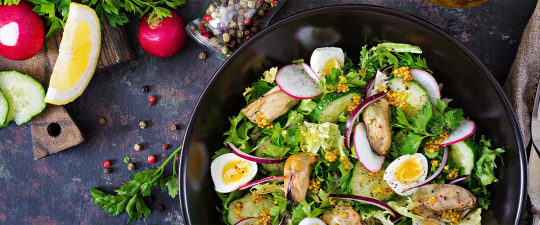
Understanding a Balanced Diet
A balanced diet is like a well-orchestrated symphony. Each food group plays its part to create a harmonious melody that fuels your body. But what exactly does a balanced diet entail?
The Basics
A diet that is balanced comprises different foods in appropriate amounts. This means consuming the right amounts of carbohydrates, proteins, fats, vitamins, and minerals. Imagine your body as a car; it requires a variety of nutrients to operate at its best, just as a car needs the correct fuel to run well.
Importance of Balance
Without a balanced diet, you might feel sluggish, experience mood swings, or even become more susceptible to illnesses. It’s essential to get a good mix of nutrients to maintain energy levels, support bodily functions, and promote overall well-being.
Protein-Rich Foods for Vegetarians
When people think of protein, they often picture a big, juicy steak. However, protein-rich foods for vegetarians are plentiful and just as effective in providing the necessary nutrients.
Legumes and Pulses
Chickpeas, lentils, and beans are excellent sources of protein. Not only are they versatile, but they also pack a punch with fibre, which aids in digestion.
Nuts and Seeds
Almonds, chia seeds, and flaxseeds are excellent for a protein boost. They’re great for snacking and can easily be added to salads, smoothies, or yoghurts.
Dairy and Alternatives
Greek yoghurt, cottage cheese, and even plant-based options like soy milk or tofu are rich in protein. They’re perfect for breakfast or as part of a light meal.
Whole Grains
Quinoa and brown rice not only provide protein but also supply essential amino acids that your body needs.
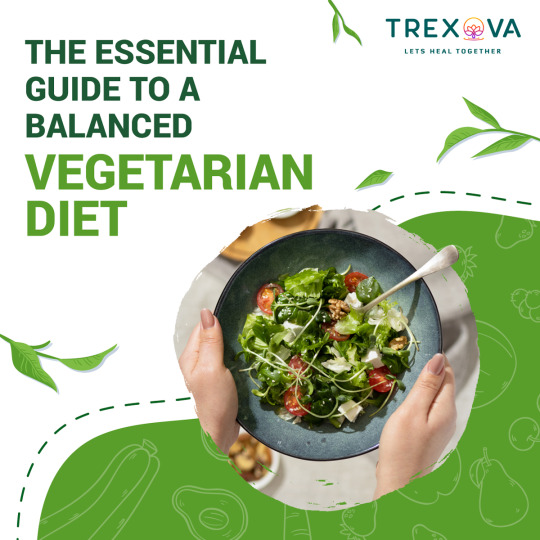
Crafting a Perfect Diet Plan
Creating a diet plan that works for you is crucial. It’s not about strict limitations but about feeling great, having more energy, and improving your health.
Setting Realistic Goals
Start with small, manageable changes. Instead of overhauling your entire diet, try incorporating more vegetables into your meals or swapping out white rice for quinoa.
Meal Planning
Plan your meals ahead of time. This helps you avoid last-minute unhealthy choices and ensures you have the necessary ingredients for nutritious meals.
Balanced Meals
Make sure you get a good balance of fats, carbohydrates, and proteins in each meal. A balanced meal keeps you full longer and provides sustained energy throughout the day.
Tips for Maintaining Your Diet
Maintaining a balanced diet can sometimes feel like walking a tightrope, but with a few tips, you can stay on track without feeling deprived.
Stay Hydrated
Drinking plenty of water is essential. Our bodies can occasionally mistake thirst for hunger, which causes us to overindulge in snacks.
Mindful Eating
Observe your diet and the effects it has on your body. This practice can help you make better food choices and enjoy your meals more.
Allow Flexibility
It’s okay to indulge occasionally. The key is moderation. Enjoy your favourite treats without guilt, but balance them with healthier options.
Conclusion
Adopting a balanced diet and including protein-rich foods for vegetarians doesn’t have to be a daunting task. By understanding the essentials, crafting a thoughtful diet plan, and following practical tips, you can embark on a journey to better health and wellness. Remember, it’s about progress, not perfection. So, start small, stay committed, and enjoy the positive changes in your life.
9 notes
·
View notes
Text
Comprehensive Benefits of a Plant-Based Diet: Health, Environment, and Beyond
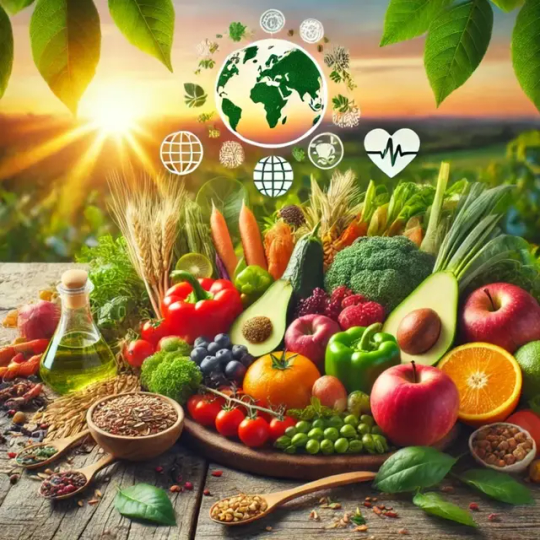
Adopting a plant-based diet can have numerous benefits for your health, the environment, and animal welfare. Here’s a detailed breakdown:
Health Benefits
Improved Heart Health
Plant-based diets are rich in fiber, antioxidants, and healthy fats, which help lower LDL (“bad”) cholesterol and blood pressure.
Reduces the risk of heart disease, stroke, and hypertension.
Weight Management
Plant-based diets tend to be lower in calories and high in fiber, promoting satiety and aiding weight loss or weight maintenance.
Studies show that vegetarians and vegans often have lower body mass indices (BMIs).
Reduced Risk of Chronic Diseases
Lower incidence of type 2 diabetes: Whole grains, legumes, and vegetables regulate blood sugar levels.
Reduced cancer risk: Diets high in fruits, vegetables, and legumes contain antioxidants and phytochemicals that combat cancer.
Lower inflammation: Plant-based diets reduce chronic inflammation linked to arthritis, autoimmune conditions, and other illnesses.
Better Digestive Health
High fiber content supports gut health, promotes regular bowel movements, and prevents constipation.
Encourages a diverse gut microbiome, which is linked to improved immunity and mental health.
Longevity
Studies suggest that plant-based diets are associated with a longer lifespan due to the reduced risk of chronic illnesses.
Improved Mental Health
Nutrients like magnesium, folate, and antioxidants found in plant-based foods are associated with better mood regulation and reduced symptoms of depression.
Enhanced Nutrient Intake
A plant-based diet is rich in essential vitamins (e.g., C, E, and folate), minerals (e.g., potassium, magnesium), and phytonutrients that boost overall health.
Antioxidants in plant foods neutralize free radicals, reducing cellular damage and slowing aging processes.
Improved Bone Health
Contrary to common misconceptions, plant-based diets can support strong bones through calcium-rich foods like fortified plant milks, tofu, almonds, and leafy greens.
Plant-based sources of magnesium and potassium improve bone density.
Reduced Risk of Neurodegenerative Diseases
Diets high in vegetables, fruits, nuts, and seeds have been linked to a lower risk of Alzheimer’s disease and cognitive decline.
Omega-3 fatty acids from plant sources like flaxseeds, chia seeds, and walnuts support brain health.
Boosted Immune System
Plant-based foods contain immune-supporting vitamins (e.g., vitamin C from citrus fruits) and zinc from legumes, nuts, and seeds.
Improved Skin Health
High intake of water-rich foods like fruits and vegetables hydrates the skin.
Antioxidants (e.g., beta-carotene in carrots, and lycopene in tomatoes) help reduce acne, prevent sun damage, and promote a glowing complexion.
read full article only at https://fitnessproguru.com/healthy-diet/comprehensive-benefits-of-a-plant-based-diet-health-environment-and-beyond/
#fitness#fitnessmotivation#healthcare#health & fitness#health and wellness#mental health#vegan#veganfood#go vegan
4 notes
·
View notes
Text
20 Foods to Eat on the Keto Diet

1. Eggs 🥚
A keto staple, rich in protein and healthy fats.
2. Avocados 🥑
High in heart-healthy fats and fiber, perfect for keeping you full.
3. Meat (Beef, Chicken, Pork, Lamb, Turkey, etc.) 🍗🥩
Provides high-quality protein and essential nutrients.
4. Fatty Fish (Salmon, Tuna, Mackerel, Sardines) 🐟
Loaded with omega-3 fatty acids, great for brain and heart health.
5. Cheese (Cheddar, Mozzarella, Goat Cheese, Parmesan, etc.) 🧀
Low in carbs, high in fat, and a tasty keto-friendly snack.
6. Butter & Ghee 🧈
Perfect for cooking and adding extra fat to your meals.
7. Coconut Oil 🥥
A great source of MCTs (medium-chain triglycerides) for quick energy.
8. Olive Oil 🫒
Packed with antioxidants and healthy monounsaturated fats.
9. Nuts (Almonds, Macadamia, Pecans, Walnuts, etc.) 🌰
Low-carb, high-fat, and great for snacking in moderation.
10. Seeds (Chia, Flaxseeds, Pumpkin, Sunflower, etc.) 🌻
High in fiber, protein, and healthy fats.
11. Full-Fat Dairy (Greek Yogurt, Heavy Cream, Sour Cream) 🥄
Provides healthy fats and probiotics for gut health.
12. Leafy Greens (Spinach, Kale, Lettuce, Swiss Chard, etc.) 🥬
Low in carbs and packed with essential vitamins and minerals.
13. Cruciferous Vegetables (Broccoli, Cauliflower, Brussels Sprouts, Cabbage, etc.) 🥦
Rich in fiber and antioxidants while keeping carbs low.
14. Berries (Raspberries, Blackberries, Strawberries, Blueberries – in moderation) 🍓
The lowest-carb fruits, full of antioxidants and fiber.
15. Cauliflower 🌾
A perfect substitute for rice, mashed potatoes, or pizza crust.
16. Zucchini 🥒
A versatile low-carb vegetable great for making noodles or chips.
17. Mushrooms 🍄
Low in carbs and packed with nutrients and umami flavor.
18. Peppers (Bell Peppers, Jalapeños, etc.) 🌶
Low in carbs and full of vitamins A & C.
19. Dark Chocolate (85% or Higher, Sugar-Free Preferred) 🍫
A keto-friendly treat with antioxidants.
20. Bone Broth 🍲
Rich in collagen, minerals, and electrolytes to support digestion and hydration
click here to buy keto: https://shorturl.at/KQeEi
#keto#ketorecipes#ketodiet#ketogenic#mental health#healthcare#health & fitness#the heart killers#weight loss#health and wellness#fitness
2 notes
·
View notes
Text
Best Smoothie Recipes for Weight Loss
Smoothies for Weight Loss
Are you looking for a delicious and nutritious way to support your weight loss journey? Look no further than smoothies! These blended beverages have become increasingly popular among health enthusiasts and those seeking to shed a few pounds. But what makes smoothies such a great tool for weight loss? Let's dive in and explore the world of weight loss smoothies together.
Benefits of Smoothies for Weight Management
Smoothies offer a plethora of benefits when it comes to weight management. First and foremost, they're an excellent way to pack a ton of nutrients into a single, easy-to-consume drink. By blending fruits, vegetables, and other wholesome ingredients, you're creating a nutrient-dense meal that can help keep you feeling full and satisfied.
Moreover, smoothies can be a great replacement for high-calorie snacks or meals. They're quick to prepare, portable, and can be customized to suit your taste preferences and nutritional needs. Plus, the high water content in smoothies can help keep you hydrated, which is essential for overall health and can even help curb unnecessary snacking.
Key Ingredients for Weight Loss Smoothies
Protein Sources
Protein is a crucial component of any weight loss diet, and it's no different when it comes to smoothies. Including protein in your smoothies can help keep you feeling full, support muscle growth and repair, and boost your metabolism. Some great protein sources for smoothies include:
Greek yogurt
Protein powder (whey, plant-based, or collagen)
Silken tofu
Nut butters
Fiber-Rich Foods
Fiber is another essential ingredient for weight loss smoothies. It aids in digestion, helps regulate blood sugar levels, and promotes feelings of fullness. Some fiber-rich foods to consider adding to your smoothies are:
Leafy greens (spinach, kale)
Chia seeds
Flaxseeds
Oats
Berries
Healthy Fats
While it might seem counterintuitive, including healthy fats in your weight loss smoothies can actually be beneficial. Healthy fats help your body absorb certain nutrients and can contribute to feelings of satiety. Some good sources of healthy fats for smoothies include:
Avocado
Nuts and seeds
Coconut oil
MCT oil
Low-Calorie Fruits and Vegetables
Fruits and vegetables are the backbone of any good smoothie. They provide essential vitamins, minerals, and antioxidants while keeping the calorie count low. Some great options for weight loss smoothies include:
Berries (strawberries, blueberries, raspberries)
Citrus fruits (oranges, lemons, limes)
Cucumber
Celery
Zucchini
Top 10 Best Smoothie Recipes for Weight Loss
Now that we've covered the basics, let's dive into some mouthwatering smoothie recipes that can help support your weight loss goals!
1. Green Goddess Smoothie

1 cup spinach
1/2 avocado
1 banana
1 tbsp chia seeds
1 cup unsweetened almond milk
1 scoop vanilla protein powder
Blend all ingredients until smooth and creamy. This nutrient-packed smoothie is loaded with fiber, healthy fats, and protein to keep you satisfied.
2. Berry Blast Protein Shake
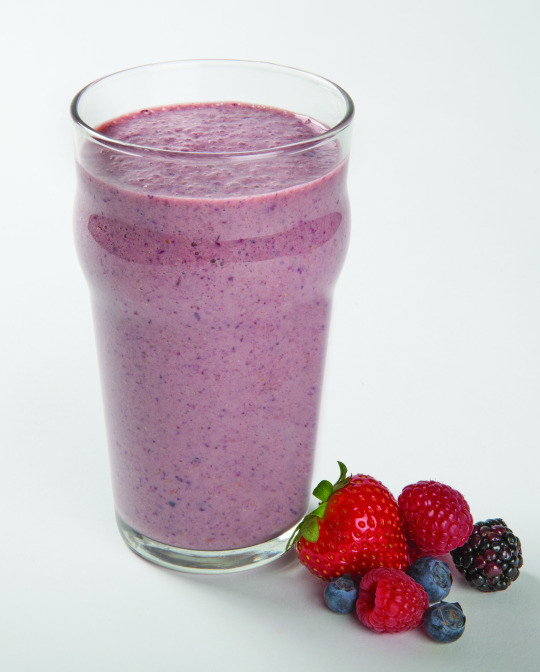
1 cup mixed berries (strawberries, blueberries, raspberries)
1/2 cup Greek yogurt
1 tbsp almond butter
1 cup unsweetened almond milk
1 scoop vanilla protein powder
Combine all ingredients in a blender and mix until smooth. This antioxidant-rich smoothie is perfect for post-workout recovery and weight management.
3. Tropical Slimdown Smoothie
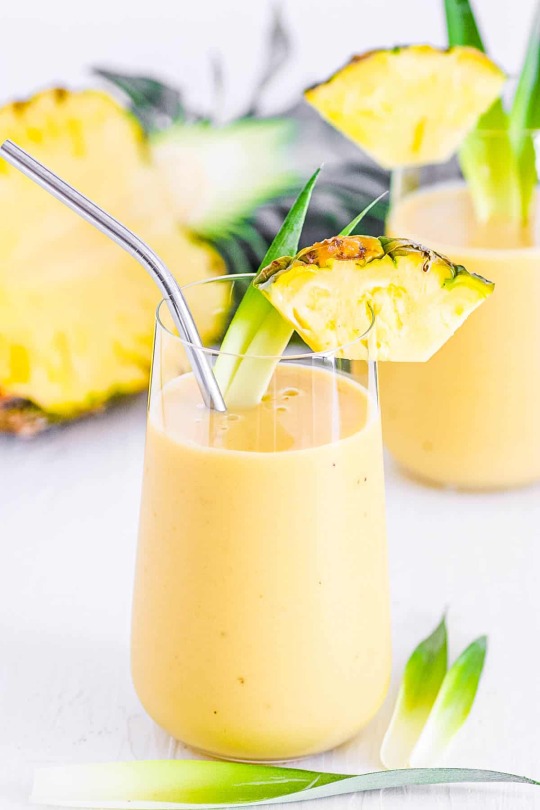
1/2 cup pineapple chunks
1/2 cup mango chunks
1/2 banana
1 cup coconut water
1 tbsp lime juice
1 scoop vanilla protein powder
Blend all ingredients for a refreshing, tropical treat that's low in calories but high in flavor.
4. Chocolate Peanut Butter Banana Smoothie
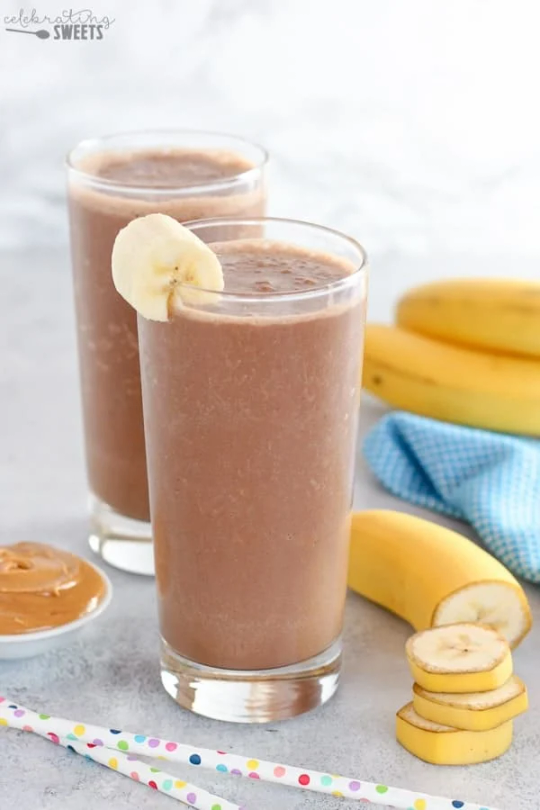
1 banana
1 tbsp unsweetened cocoa powder
1 tbsp natural peanut butter
1 cup unsweetened almond milk
1 scoop chocolate protein powder
1 handful of spinach (optional)
Mix all ingredients for a decadent-tasting smoothie that's actually good for you!
5. Mango Turmeric Anti-Inflammatory Smoothie
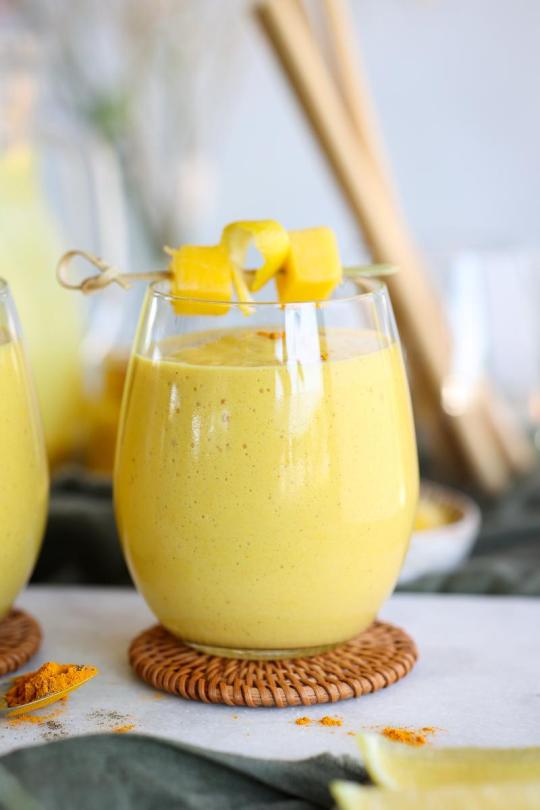
1 cup frozen mango chunks
1/2 banana
1 tsp turmeric powder
1/4 tsp black pepper
1 cup unsweetened coconut milk
1 tbsp hemp seeds
Blend all ingredients for a golden, anti-inflammatory smoothie that supports weight loss and overall health.
6. Spinach and Avocado Detox Smoothie
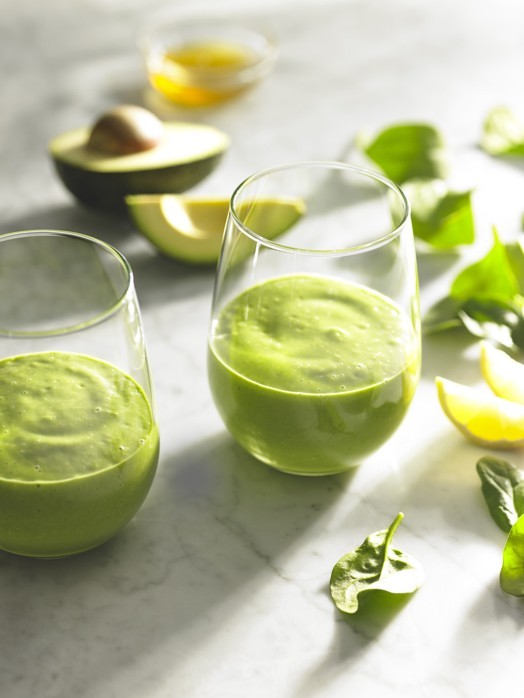
2 cups spinach
1/4 avocado
1 green apple
1/2 cucumber
1 tbsp lemon juice
1 cup water
1 scoop unflavored protein powder
Combine all ingredients for a green detox smoothie that's packed with nutrients and supports weight loss.
7. Cucumber Mint Refresher

1 cucumber
1/4 cup fresh mint leaves
1 green apple
1 tbsp lime juice
1 cup coconut water
1 scoop vanilla protein powder
Blend all ingredients for a refreshing, low-calorie smoothie that's perfect for hot summer days.
8. Pumpkin Spice Protein Smoothie
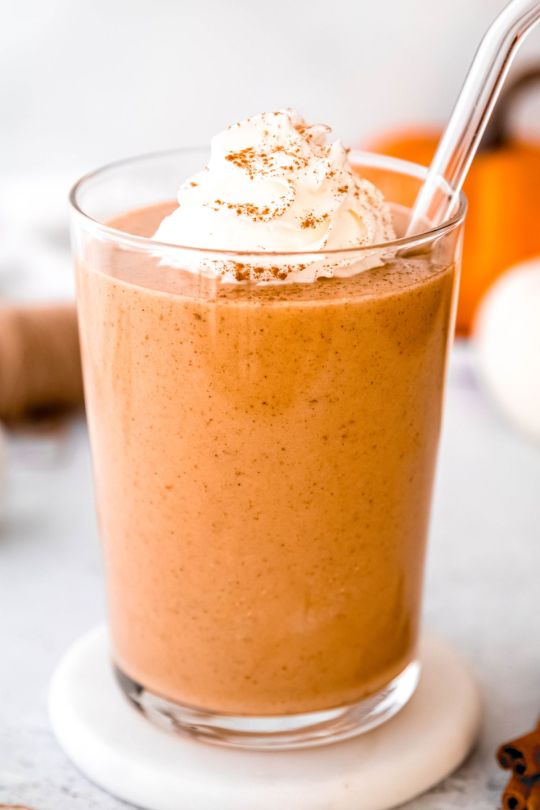
1/2 cup pumpkin puree
1 banana
1 tsp pumpkin pie spice
1 cup unsweetened almond milk
1 scoop vanilla protein powder
1 tbsp ground flaxseed
Mix all ingredients for a seasonal smoothie that's both comforting and waistline-friendly.
9. Blueberry Almond Meal Replacement Smoothie

1 cup blueberries
1/4 cup raw almonds
1 tbsp almond butter
1 cup unsweetened almond milk
1 scoop vanilla protein powder
1 handful of spinach
Blend all ingredients for a filling meal replacement smoothie that's rich in antioxidants and healthy fats.
10. Apple Cinnamon Oatmeal Smoothie
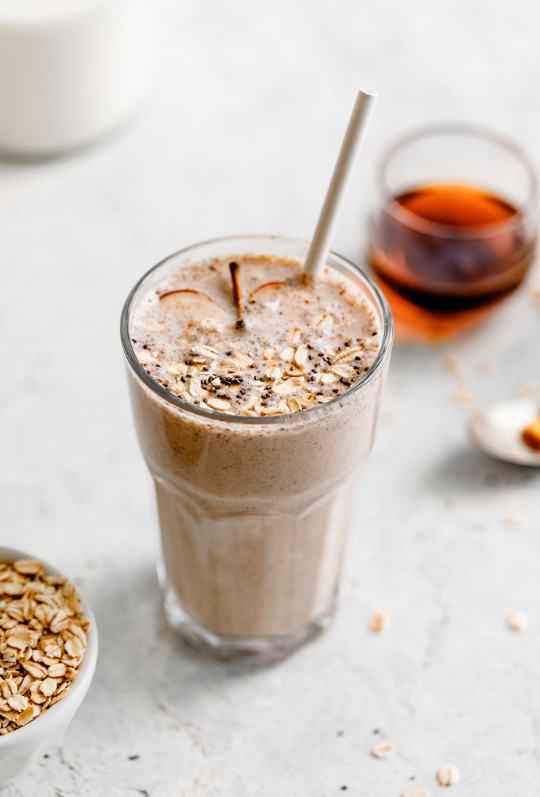
1 apple, cored and chopped
1/4 cup rolled oats
1 tsp cinnamon
1 cup unsweetened almond milk
1 scoop vanilla protein powder
1 tbsp ground flaxseed
Combine all ingredients for a smoothie that tastes like apple pie but supports your weight loss goals.
Tips for Making Weight Loss Smoothies
Use frozen fruits to make your smoothies thicker and creamier without adding ice.
Don't be afraid to add vegetables – they're low in calories and high in nutrients.
Measure your ingredients to avoid overloading on calories.
Use unsweetened plant-based milk to keep sugar content low.
Experiment with different flavor combinations to keep things interesting.
How to Incorporate Smoothies into Your Weight Loss Plan
While smoothies can be a valuable tool for weight loss, it's important to incorporate them into your diet strategically. Here are some tips:
Use smoothies as meal replacements for breakfast or lunch, not as additions to your regular meals.
Pay attention to portion sizes – even healthy smoothies can contribute to weight gain if consumed in excess.
Balance your smoothies with whole foods throughout the day to ensure you're getting a variety of nutrients.
Don't rely solely on smoothies – they should be part of a balanced, whole-food diet.
Listen to your body – if you find that smoothies aren't keeping you satisfied, adjust your recipes or consider other meal options.
Conclusion
Smoothies can be a delicious and nutritious addition to your weight loss journey. By incorporating the right ingredients and following the recipes and tips provided, you can create satisfying smoothies that support your health and weight loss goals. Remember, the key to successful weight loss is consistency and balance, so enjoy your smoothies as part of a well-rounded, healthy lifestyle.
Smoothie Diet Official Website
#smoothie diet recipes#smoothie diet plan#smoothie recipe#smoothies#smoothie#weight loss#weight loss smoothie recipes#smoothie recipes#blueberries#dessert#raspberries#pancakes#coconut#weight loss program#i want to lose weight#lose weight fast#smoothie diet#viralpost#how to lose weight#weight loss tea#weight loss diet#weight goals#weight loss tips#fat loss#weight loss motivation#weight management#tumblr trends
2 notes
·
View notes
Text
Unlocking the Secret to the Ultimate Meal Combination

When it comes to achieving optimal health, few things are as important as the meals we eat. The foods we choose and the way we combine them can profoundly impact our energy levels, immune system, and overall well-being.
But with endless choices and conflicting advice, it’s easy to feel overwhelmed. Many of us struggle to find balance—stuck in repetitive eating habits, following the latest fad diets, or wondering if what we’re eating is truly healthy.
The good news? Achieving optimal nutrition doesn’t have to be complicated or restrictive. It starts with understanding how to combine foods in a way that unlocks their full nutritional potential.
The Importance of Meal Combinations
Proteins, carbohydrates, healthy fats, vitamins, and minerals each play a vital role in your health. Individually, they’re important—but together, they’re transformative. A well-balanced meal helps:
Build and repair muscles (thanks to protein)
Fuel energy levels (with complex carbohydrates)
Support brain function and hormones (with healthy fats)
Aid digestion (with fiber)
Maintain overall health (with essential vitamins and minerals)
When we create meals with all these elements in mind, we’re not just eating—we’re fueling our bodies to thrive.
Building the Perfect Meal
So, what does the ultimate meal look like? Here’s a breakdown of how to create one:
Start with Protein Protein is the building block of muscles and tissues. Great sources include grilled chicken, salmon, lentils, or tofu.
Add Complex Carbohydrates These provide sustained energy throughout the day. Choose options like quinoa, brown rice, or sweet potatoes.
Incorporate Healthy Fats Fats support brain health and hormone production. Avocado, nuts, seeds, or olive oil are excellent choices.
Don’t Forget Fiber and Omega-3s Fiber aids digestion, while omega-3 fatty acids are essential for heart and brain health. Add steamed broccoli, sautéed spinach, walnuts, or chia seeds to your meal.
Round It Out with Vitamins and Minerals Brighten your plate with colorful vegetables or a side salad. A mix of greens, cherry tomatoes, and a citrus vinaigrette makes for a simple, nutrient-packed addition.
Tips for Incorporating Balanced Meals
You don’t need to overhaul your diet overnight. Start with one balanced meal a day and experiment with combinations that excite your taste buds.
For example:
Lunch Idea: Grilled salmon, quinoa, and roasted asparagus with a drizzle of olive oil.
Dinner Idea: A hearty salad with mixed greens, avocado, walnuts, and a zesty lemon dressing.
Remember, it’s not about restriction. It’s about smart choices that empower your body.
The Role of Dapear Nutrition
At Dapear, we’re passionate about helping you live a healthier life. That’s why we offer premium supplements designed to complement your balanced meals and fill any nutritional gaps.
Our products include:
Collagen for healthy skin, joints, and hair
Biotin for glowing skin and strong nails
Plant Protein for a clean, high-quality protein source
Multivitamins to support overall health
Fish Oil for omega-3s that boost heart and brain health
Explore our range at dapear.com and find the perfect addition to your wellness routine.
Take the First Step Today
Creating the perfect meal combination doesn’t have to be complicated. With the right balance of protein, carbs, fats, and micronutrients, you can transform your meals into powerful tools for better health.
What’s your favorite healthy meal combination? Share it with us in the comments below or tag us on social media using #DapearNutrition. We’d love to hear from you!
Fuel smarter. Live healthier. Start today.
#HealthyEating#BalancedMeals#NutritionTips#MealPlanning#WellnessJourney#HealthyLifestyle#Superfoods#DapearNutrition#OptimalHealth#CleanEating#BoostYourEnergy#HealthyChoices#FitnessFuel#MindfulEating#HealthGoals
2 notes
·
View notes
Text

There are several foods that are known to support brain health and cognitive function. Incorporating these foods into your diet can help boost memory, focus, and overall brain health. Some of the best foods for brain health include:
1. Fatty fish: Fatty fish like salmon, trout, and sardines are rich in omega-3 fatty acids, particularly DHA, which is essential for brain health. Omega-3s have been linked to improved brain function and may help reduce the risk of cognitive decline.
2. Blueberries: Blueberries are packed with antioxidants, which help protect the brain from oxidative stress and inflammation. They have also been shown to improve memory and cognitive function.
3. Dark chocolate: Dark chocolate contains flavonoids, which have antioxidant and anti-inflammatory properties that can enhance brain function. It may also improve mood and cognitive function.
4. Nuts and seeds: Nuts and seeds, such as almonds, walnuts, flaxseeds, and chia seeds, are rich in nutrients like omega-3 fatty acids, antioxidants, and vitamin E, which are beneficial for brain health.
5. Leafy green vegetables: Leafy greens like spinach, kale, and broccoli are high in antioxidants, vitamins, and minerals that support brain health. They also contain compounds that may help protect the brain from age-related decline.
6. Turmeric: Turmeric contains a compound called curcumin, which has anti-inflammatory and antioxidant properties that may benefit brain health. It has been linked to improved memory and mood.
7. Eggs: Eggs are a good source of choline, a nutrient that is essential for brain health and development. Choline plays a role in neurotransmitter function and may enhance cognitive performance.
8. Berries: Berries like strawberries, blackberries, and raspberries are rich in antioxidants and other compounds that can protect the brain from oxidative stress and inflammation. They may also improve memory and cognitive function.
In addition to incorporating these brain-boosting foods into your diet, it's important to maintain a balanced and varied diet rich in fruits, vegetables, whole grains, lean proteins, and healthy fats to support overall brain health. Regular physical activity, adequate sleep, and mental stimulation are also important factors in maintaining a healthy brain.
#comfort food#fast food#foodpics#foodie#food#foodlover#food photography#tw food#food fight#food for thought#healthy food#foodmyheart#lunch recipes#pasta recipes#pasta recipe#salad recipes#soup recipe#recipe#reciprocity#recipies#recipes#healthy salad recipes#cozy fall#cozyhome#cozy cozy#healthy lunch ideas#healthy lunch#healthy diet#healthy#healthy living
34 notes
·
View notes
Text
What is the Alkaline Diet? A Complete Guide for Beginners
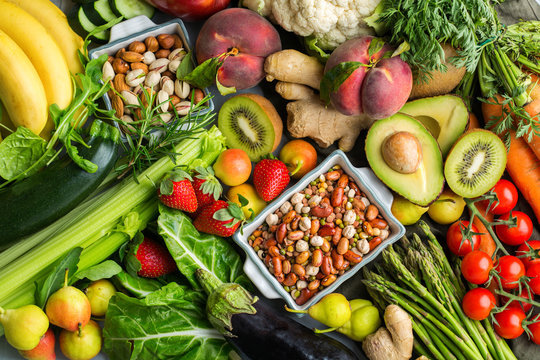
The Alkaline Diet: A Healthy Eating Plan for Optimal Wellness
The alkaline diet has become an increasingly popular way of eating that promotes overall health and wellness. This eating plan focuses on foods that help balance your body's pH levels to create an environment that supports healthy cells and tissues.
What is the Alkaline Diet?
The alkaline diet is based on the principle that the foods you eat can alter your body's pH balance and impact your health. The ultimate goal is to create an internal environment that has a pH ranging from 7.35 to 7.45, which is slightly alkaline. Foods are categorized as either acidic, alkaline, or neutral: Alkaline foods - Fruits, nuts, legumes, and vegetables Acidic foods - Meat, dairy, eggs, grains, alcohol, and processed foods Neutral foods - Natural fats, starches, and sugars By emphasizing alkaline foods and limiting acidic foods, proponents of this diet believe it can help neutralize chronic low-grade acidosis linked to inflammation, fatigue, and increased disease risk.
Benefits of an Alkaline Diet
Following an alkaline diet offers impressive benefits: Promotes pH balance Reduces inflammation Boosts immunity Increases energy Aids weight loss efforts Improves cardiovascular health Strengthens bones Detoxifies the body The diet focuses on nutrient-dense whole foods that provide antioxidants, vitamins, minerals, fiber, and water to help neutralize acids and remove toxins from the body. Balances pH Levels One of the main goals of the alkaline diet is to balance the body's pH levels. Chronic low-grade acidosis happens when acidic wastes accumulate in the body faster than they can be neutralized. This causes the body's pH to drop into unhealthy ranges. The alkaline diet counteracts this acidity and helps: Regulate fluids and electrolytes Filter out toxins and wastes Transport nutrients into cells Together this provides an ideal environment for cells and systems to function properly. Reduces Inflammation Acidosis creates an environment inside the body that promotes inflammation, a key factor in many chronic diseases. The anti-inflammatory foods emphasized on the alkaline diet can help reduce acidity and calm this internal fire. Some examples include: Fruits high in vitamin C Green leafy vegetables Nuts like almonds and walnuts Plant-based proteins like lentils and beans Lower levels of inflammation helps people feel better day-to-day. But even more importantly, it lowers the risk for disorders caused by chronic inflammation. Other Key Benefits Some other top reasons to follow the alkaline diet include: Increased Energy Levels - A balanced pH provides cells with ideal conditions for producing energy. Healthy Weight - The diet emphasizes low energy-density foods that support weight loss. Strong Bones - The diet provides bone-building nutrients often lacking in modern diets. Detoxification - Alkaline foods help remove acidic waste products and toxins. Together this creates an internal terrain that discourages damaged cells and chronic diseases from taking root.
The Best Alkaline Foods to Eat

Focus your diet around these alkaline superfoods: Fruits Fruits are packed with alkaline-promoting nutrients. Choose fresh or frozen organic when possible. Top picks include: Lemons Watermelon Apple Grapefruit Kiwi Berries Papaya Pears Vegetables Aim for eating a variety of organic vegetables each day. Great options include: Spinach Kale Cucumbers Celery Carrots Sweet potatoes Broccoli Sea vegetables Nuts and Seeds Nuts and seeds are excellent sources of protein and healthy fats. Soak nuts before eating to boost nutrients. Try: Almonds Flaxseeds Pumpkin seeds Sunflower seeds Chestnuts Chia seeds Herbs, Spices and Oils Boost flavor and pH with these additions: Lemongrass Ginger Turmeric Cinnamon Garlic Cold-pressed olive oil Coconut oil Avocado oil
Foods to Avoid on the Diet

To balance your pH effectively, you’ll also want to avoid or limit these acidic foods: Red meat Poultry Seafood Eggs Dairy products Processed grains Sugar Packaged snacks Soda Alcohol Coffee Even whole grains and beans - two staples of healthy diets - should be eaten sparingly since they skew acidic.
Additional Tips for Success
Follow these suggestions to make the most of an alkaline diet: Stay well hydrated with alkaline water Enjoy herbal teas Reduce stress through yoga, meditation, etc. Exercise at least 30 minutes daily Add more raw foods slowly Focus on how you feel As with any significant change to your diet, implement this eating pattern gradually. This gives your body time to adjust its complex systems. Pay attention to the signals your body is sending about the changes. Over time, you should feel less internal "discomfort" and more vibrant energy. Chronic issues you learned to tolerate could show improvement or fade away completely.
The Bottom Line
The emerging research shows an alkaline diet may be an extremely healthy way to prevent damage from modern diets and lifestyles. While studies continue, adjusting your eating pattern to favor alkaline foods poses little risk and offers tremendous potential. It provides a sustainable, nutrient-dense approach to eating that fights inflammation and encourages good health starting on the inside! Doctor Sebi Cell Food Diet Explained: Components, Purported Benefits, Controversy & Safety Reviewed Read the full article
13 notes
·
View notes
Text
Harnessing the Power of Calcium: Exploring Its Benefits and Plant-Based Sources
Calcium is an essential mineral that plays a vital role in maintaining overall health and well-being. While many associate calcium with dairy products, there are numerous plant-based sources that provide this crucial nutrient. In this blog post, we will delve into the benefits of calcium for the human body and explore some of the best plant-based sources to incorporate into your diet.
The Importance of Calcium:
Calcium is widely recognized for its role in building and maintaining strong bones and teeth. However, its benefits extend far beyond skeletal health. Calcium is also involved in muscle contractions, nerve function, blood clotting, and the regulation of enzyme activity. It is particularly crucial during childhood and adolescence when bones are growing, as well as during pregnancy and breastfeeding.
Additionally, adequate calcium intake throughout life may reduce the risk of developing osteoporosis, a condition characterized by weak and brittle bones. Furthermore, research suggests that calcium may play a role in managing blood pressure and reducing the risk of colorectal cancer.
Plant-Based Sources of Calcium:
For individuals who follow a plant-based or dairy-free diet, it's important to be aware of alternative sources of calcium. Here are some of the best plant-based sources to consider:
1. Leafy Greens:
Dark, leafy greens such as kale, collard greens, turnip greens, and spinach are excellent sources of calcium. These nutrient-packed vegetables not only offer calcium but also provide other essential vitamins and minerals.
2. Almonds:
Almonds are a versatile and nutritious snack that contains a considerable amount of calcium. Additionally, they offer healthy fats, protein, and fiber, making them a valuable addition to your diet.
3. Sesame Seeds:
Sesame seeds, commonly used in various cuisines, are a rich source of calcium. They can be sprinkled on salads, added to baked goods, or used in homemade granola for an extra calcium boost.
4. Tofu and Tempeh:
Tofu and tempeh, both derived from soybeans, are excellent plant-based sources of calcium. These versatile protein sources are widely used in vegetarian and vegan cooking and can be incorporated into a variety of dishes.
5. Fortified Plant-Based Milk Alternatives:
Many plant-based milk alternatives, such as almond milk, soy milk, and oat milk, are fortified with calcium to provide a comparable amount to dairy milk. Be sure to check the labels to ensure adequate calcium content.
6. Chia Seeds:
Chia seeds not only provide calcium but are also rich in omega-3 fatty acids, fiber, and antioxidants. They can be added to smoothies, oatmeal, or used as a topping for yogurt or salads.
7. Beans and Lentils:
Beans and lentils, including chickpeas, black beans, and lentils, are not only excellent sources of protein and fiber but also contain notable amounts of calcium. They can be incorporated into soups, stews, salads, or even used as a base for veggie burgers.
Calcium is an essential mineral that contributes to numerous functions within the human body. While dairy products are often associated with calcium, there are plenty of plant-based sources that can provide this vital nutrient. By incorporating leafy greens, almonds, sesame seeds, tofu, fortified plant-based milk alternatives, chia seeds, beans, and lentils into your diet, you can ensure an adequate calcium intake while enjoying a diverse and nutritious plant-based lifestyle. Remember to consult with a healthcare professional or registered dietitian for personalized guidance on meeting your calcium needs and maintaining optimal health.
For more detailed and comprehensive information, I recommend referring to reputable sources such as:
National Institutes of Health (NIH) - Office of Dietary Supplements:
Website: https://ods.od.nih.gov/factsheets/Calcium-Consumer/
Mayo Clinic:
Website: https://www.mayoclinic.org/drugs-supplements-calcium/art-20363792
Harvard T.H. Chan School of Public Health:
Nutrition Source - Calcium: https://www.hsph.harvard.edu/nutritionsource/calcium/
Vegetarian Resource Group:
Calcium in the Vegan Diet: https://www.vrg.org/nutrition/calcium.php
These sources provide evidence-based information on calcium, its importance in the human body, and plant-based sources of calcium.
Remember, it's always a good idea to consult with a healthcare professional or registered dietitian for personalized advice regarding your specific dietary needs and health concerns.
#food#vegan#foodie#healthy#health#vegetarian#fitness#diet#nutrition#plant based#calcium#vegan cooking#what vegans eat#bone health#plant strong#plant medicine#educate yourself#learnsomethingneweveryday#fortheloveofnutrition#vegetable#fitblr#fitspo#healthy eating#health food#healthier
39 notes
·
View notes
Text
Best Diet Plan for Over 40: Essential Guide by Nutritionist
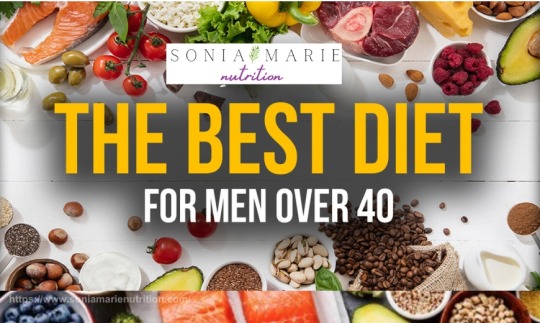
The Best Diet for Women Over 40: Essential Guide by Sonia Marie Nutrition
As women enter their 40s, nutritional needs shift to support changes in metabolism, hormonal balance, and overall health. This stage often brings new challenges, including maintaining a healthy weight, managing energy levels, and promoting bone strength. Sonia Marie Nutrition knows what is required of Diet for Women Over 40 with professional nutrition guidance. A well-balanced diet can empower women to feel their best, embrace healthy aging, and maintain vitality.
Understanding Nutritional Needs After 40
Aging naturally impacts metabolism, causing it to slow down, and hormonal changes related to perimenopause and menopause often follow. These changes make nutrient-dense foods crucial for maintaining energy, muscle tone, and metabolic health. Three nutrients particularly beneficial in this stage are calcium, fiber, and antioxidants. Calcium is essential for bone health, fiber aids in digestion and supports heart health, while antioxidants protect cells from damage, promoting overall wellness. The best diet plan for women over 40, these nutrients help in managing weight, strength maintenance, and long-term health.
The Role of Hormonal Health in Diet
Hormonal fluctuations can influence weight, energy, and even mood. Foods rich in phytoestrogens—found in flaxseeds, soy, and legumes—may help balance hormones naturally. Additionally, incorporating omega-3 fatty acids from sources like fish, chia seeds, and walnuts can support mood stability and reduce inflammation. A diet rich in nutrients can also help ease symptoms associated with menopause, including hot flashes and fatigue. Adopting a well-rounded, nutritious diet helps maintain hormonal balance, which is crucial for women navigating these natural changes.
Key Components of the Best Diet Plan for Women Over 40
The best diet plan for women over 40 emphasizes whole foods, balanced meals, and nutrient diversity. Key components include lean proteins, healthy fats, and complex carbohydrates. Protein is essential for muscle maintenance and metabolism, while healthy fats (such as those found in avocados and olive oil) support brain function and hormone production. Complex carbs—like whole grains, sweet potatoes, and legumes—offer sustained energy and stabilize blood sugar levels. A variety of colorful fruits and vegetables also ensures a broad intake of vitamins, minerals, and antioxidants.
Weight Management Strategies
Weight loss after 40 can be challenging, but it’s achievable through a combination of diet, exercise, and mindful eating. To lose weight, creating a moderate calorie deficit while prioritizing nutrition is key. Incorporating high-fiber foods and protein-rich meals can promote satiety, reducing the likelihood of overeating. Physical activity, particularly strength training, is also crucial as it helps maintain muscle mass and boosts metabolism. These combined efforts make weight management more sustainable and rewarding.
Personalized Nutrition Plans
A personalized approach to nutrition addresses individual goals, health needs, and food preferences. Sonia Marie Nutrition specializes in creating customized plans to suit each woman’s unique lifestyle. Personalized plans can focus on specific areas like weight management, hormonal balance, or enhancing bone health. By tailoring each diet plan to individual needs, women are empowered to achieve their best health outcomes effectively and enjoyably.
Common Myths About Dieting After 40
Misconceptions about dieting often circulate, especially concerning aging. For example, it’s a common myth that metabolism declines sharply after 40, making weight loss impossible. In reality, while metabolism is slow, balanced nutrition and regular exercise can significantly improve metabolism and overall health. Another myth is that restrictive diets are necessary to lose weight, but overly restrictive diets can harm metabolic health and make it harder to maintain results. A positive, balanced approach to food and exercise is far more effective for lasting wellness.
How Can Top Nutritionists Help with the Best Diet Plan for Women Over 40?
Working with a nutritionist like Sonia Marie Nutrition, who has over 30+ years of experience, provides invaluable support in navigating dietary changes. They offer expert insights into specific nutrients, portion sizes, and food choices that align with each woman’s health goals. Services offered include personalized diet plans, ongoing guidance, and meal planning strategies. With professional guidance, women over 40 can confidently manage their health, improve energy, and enhance quality of life.
10 Best Diets for Women Over 40, According to a Dietitian
Mediterranean Diet
The Mediterranean diet focuses on whole foods like fruits, vegetables, whole grains, lean proteins, and healthy fats, especially olive oil. Known to support heart health, it’s rich in antioxidants and anti-inflammatory nutrients, which help manage aging-related issues like joint health and hormonal balance.
DASH Diet (Dietary Approaches to Stop Hypertension)
The DASH diet is designed to reduce high blood pressure but offers benefits for women over 40 by emphasizing fruits, vegetables, lean proteins, and low-fat dairy. This diet also limits sodium, helping to improve heart health—a vital focus as the risk of heart disease increases with age.
Plant-Based Diet
A plant-based diet focuses primarily on whole, plant-derived foods while limiting animal products. High in fiber, antioxidants, and phytonutrients, plant-based diets are excellent for hormone health, weight management, and reducing risks of chronic conditions.
High-Protein Diet
After 40, maintaining muscle mass becomes a priority, and protein plays a crucial role in this. A high-protein diet—emphasizing lean meats, fish, eggs, and plant-based proteins like legumes and quinoa—supports muscle tone, metabolism, and bone health.
Anti-Inflammatory Diet
This diet includes foods that reduce inflammation, such as berries, fatty fish, leafy greens, nuts, and olive oil. Chronic inflammation is linked to numerous health issues, including arthritis and heart disease. Following an anti-inflammatory diet can alleviate joint pain and support overall health.
Intermittent Fasting
Intermittent fasting (IF) focuses on when to eat, rather than what to eat. Popular IF patterns, such as 16:8 (fasting for 16 hours, eating within 8 hours), have been shown to help with weight loss, blood sugar control, and energy levels, especially beneficial as metabolism slows with age.
Low-Carb Diet
Low-carb diets can be helpful for women over 40 aiming to manage weight or improve insulin sensitivity. Reducing refined carbs and increasing protein and healthy fats can stabilize blood sugar levels, reduce cravings, and support weight management.
Paleo Diet
The Paleo diet emphasizes foods our ancestors ate, like lean meats, fish, vegetables, and fruits, and excludes processed foods, dairy, and grains. It’s nutrient-dense and can help women over 40 improve digestion, energy, and metabolic health.
Flexitarian Diet
A Flexitarian diet encourages primarily plant-based foods but allows for occasional meat and dairy. This approach provides the benefits of a vegetarian diet while offering flexibility. The diet supports heart health, reduces the risk of certain cancers, and helps with weight management.
Ketogenic Diet
The Keto diet, while restrictive, can be effective for women over 40 looking to manage blood sugar and shed pounds. By drastically reducing carbs and increasing fat intake, the body shifts into ketosis, using fat for energy. It’s best followed under professional guidance to ensure nutritional needs are met.
Book Online consultation with Sonia Marie Nutrition today

Conclusion
A balanced diet that meets the evolving nutritional needs of women over 40 promotes overall health, vitality, and wellness. By incorporating whole foods, key nutrients, and tailored support, women can feel empowered to live healthily as they age. Sonia Marie Nutrition offers personalized guidance to help each woman achieve her health goals effectively and sustainably.
Ready to prioritize your health and wellness? Book a free 15-minute consultation with Sonia Marie Nutrition today! Whether you’re in the USA, Canada, or Australia, contact us directly at (818)-864-6540 or email [email protected] for personalized support.
#Best Diet for Women Over 40#best diet plan for over 40 female#diet plan for women over 40#Best Nutritionist in USA#Canada#Australia
2 notes
·
View notes